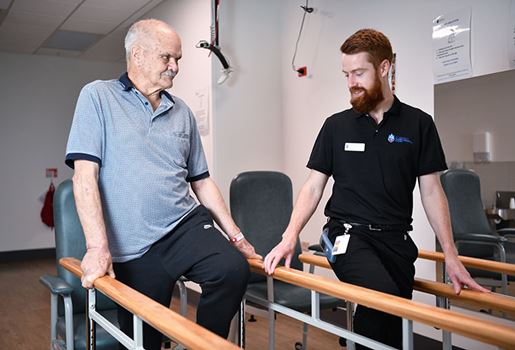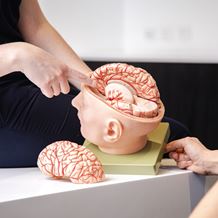Partial Hip Replacement
- Home
- Services
- Orthopaedics
- Hip Orthopaedics
- Hip Replacement
- Partial Hip Replacement
What is a partial hip replacement?
Partial hip replacement is similar to a total hip replacement. Your surgeon may recommend it if the socket area of your hip joint remains healthy, and only the ball-shaped femoral head at the top of the thigh bone is affected by injury or disease. During partial hip replacement surgery, the femoral ball of the hip joint is removed and replaced with an artificial part that is attached to a long metal stem. This implant is inserted down into the thigh bone and embedded using a type of porous material. Over time, this allows the bone to naturally grow up around it.
Often used to repair hip fractures, partial hip replacement surgery is a good option when the hip socket is still functioning and healthy and a full hip replacement is not considered necessary. Partial hip replacement can be performed as a minimally invasive procedure which means only small incisions are necessary.
Is it right for me?
Not all patients are suitable for a partial hip replacement. The decision will always depend on many factors including the extent of the injury and the condition of the hip joint. Because of the nature of the procedure, a healthy hip socket is essential for it to be truly effective. It is not recommended as a way to treat arthritis, as this is a degenerative disease that usually affects the entire hip joint. It can be beneficial for less active patients, as there is likely to be a reduced strain placed on the joint giving it greater longevity.
Partial hip replacement can also be a good surgical option for more high-risk patients as it involves less time on the operating table and therefore much less risk. Although it is a shorter surgery, it should not be seen as a less invasive alternative to a total hip replacement as the requirements are very different.
Preparation
Preparing for a partial hip replacement involves both physical and mental readiness. Before your surgery your surgeon will provide you with comprehensive information about the procedure to set clear expectations. It's beneficial to stay active leading up to the surgery; strengthening the hip muscles can significantly aid in post-operative recovery. Gentle exercises like walking and swimming are recommended.
Follow up
After a partial hip replacement, consistent follow-up care is paramount to monitor the healing process and ensure the success of your procedure. You will typically have your initial post-operative appointment a few weeks after the surgery to assess the surgical area and ensure there are no complications. Further check-ups may be scheduled where your orthopaedic surgeon will evaluate the function of the replaced hip joint. They will also check for any signs of complications and may recommend X-rays or other imaging tests.

Hip replacement approaches
Other hip surgeries
Partial Hip Replacement FAQs

How much will my hip surgery cost?
Understanding the cost of your treatment is an important consideration before committing to surgery, but it’s not always easy to find the information you need. Learn more about the factors which contribute to the cost of your surgery:
What will my treatment and recovery look like?
Familiarising yourself with your treatment program and understanding the recovery process are important steps to take on the pathway to surgery.

Find a hospital with orthopaedic services
Our Hospitals



